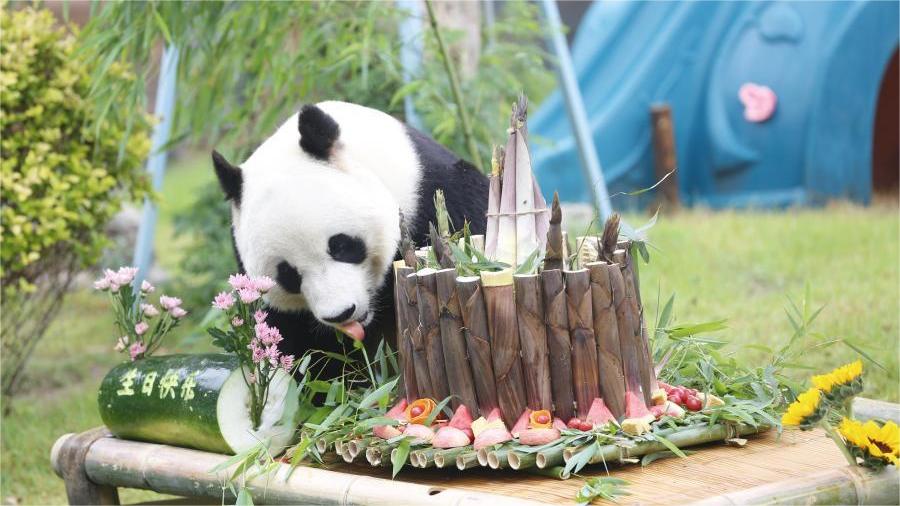From French pastures to Chinese plates: How cheese symbolizes growing ties
The journey of a slice of French cheese, crafted from fresh milk on the farms of France, to the dining tables of China, is a testament to the growing economic and trade ties between the two nations. This voyage, spanning approximately 8,330 kilometers and taking months of transportation via land and sea, symbolizes the enduring friendship between China and France.
This year marks the 60th anniversary of diplomatic relations between China and France. Over the past six decades, bilateral trade between the two countries has grown by over 800 times. With the rising living standards of Chinese consumers, French cheese has emerged as one of the fastest-growing categories in the domestic Chinese market in recent years. The rapid development of the full-chain collaboration mechanism, "from French farms to Chinese tables," has been guided by the leaders of both nations.
Recently, reporters embarked on separate journeys to trace the journey of French cheese from its origins to Chinese consumers. They began by exploring cheese ingredients in France, the "land of cheese," then visited Tianjin, a port city near Beijing, to understand Sino-French collaboration in cheese production. Finally, they traveled to Shanghai to experience the cultural exchange and integration of Chinese and French cheese cultures.
French cheese has become a delicious treat for Chinese consumers, vividly highlighting the deepening friendship, tolerance, and cooperation between the two nations.
Birth: From a drop of milk to a slice of cheese
How does milk transform into authentic French cheese? To answer this, one must start with a blade of grass and a cow.
In the lush pastures of Nielie Farm in Maulévrier, southwest of Paris, cows graze leisurely near neat and spacious barns where dairy products are processed. The farm grows feed crops such as oats, barley, and black wheat without chemical pesticides or fertilizers to maintain ecological balance. In the hay drying room, warm air speeds up the drying process to preserve the grass's nutritional value. Livestock manure returns to the fields as fertilizer, forming a sustainable organic cycle.
From growing feed crops and breeding high-quality cows to milking and initial processing, fresh milk undergoes pasteurization, coagulation, and drainage, transforming into various types of cheese.
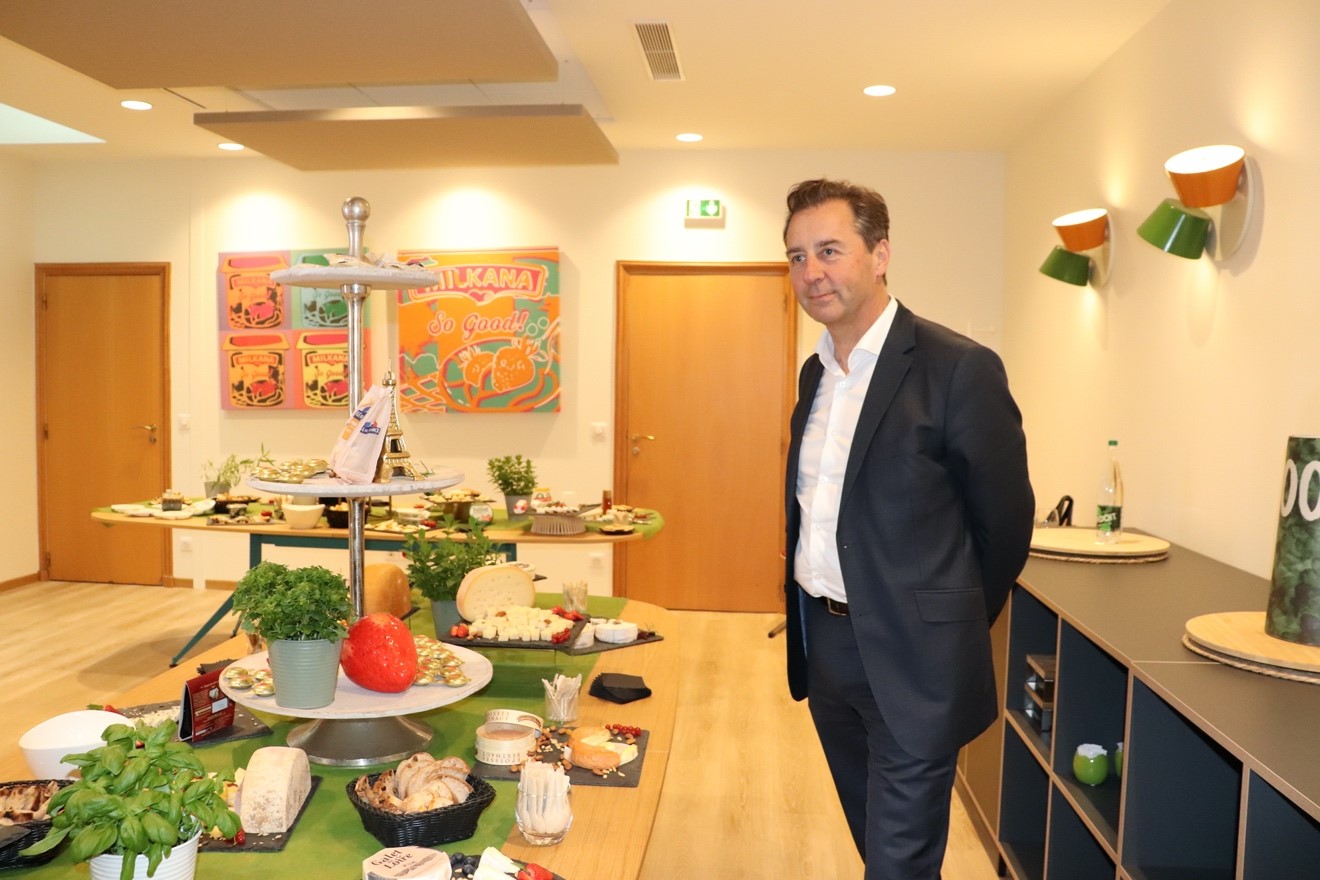
Jean-Baptiste Van Elslande, Savencia Cheese Group CEO for Asia Pacific, Africa, and the Middle East, introduces the company's development history. (Qian Haifen/People's Daily)
"Cheese is the essence of milk. The key to making a quality cheese lies in ensuring high-quality milk sources," said Jean-Baptiste Van Elslande, CEO of Savencia Cheese Group for Asia Pacific, Africa, and the Middle East. Established in 1956, Savencia is one of the largest cheese-manufacturing companies globally.
"For all cheese products processed in France, the milk source originates from France. We strive to maintain local processing of milk sources. Eighty-nine percent of the milk raw materials in the entire group come from dairy factories within a 70-kilometer radius, and 67 percent come from dairy factories within 30 kilometers. Through close cooperation with milk suppliers, we ensure the high quality of our milk sources," Van Elslande said.
"Maintaining close communication with farms is the secret to ensuring the quality of cheese raw materials," Van Elslande added. The company has rules that all milk suppliers must follow regarding milk quality and production conditions. Dairy resource coordinators are in contact with farm owners every day, visiting farms at least once a year to assess milk quality and provide technical support.
During the process of turning milk into cheese, differences in production processes such as fermentation time, types of fermentation bacteria used, coagulation and maturation processes, and pressing methods give rise to different varieties of cheese, such as soft cheese, rennet cheese, and blue cheese, each with its unique flavor and texture. France boasts over 1,200 subcategories of cheese.
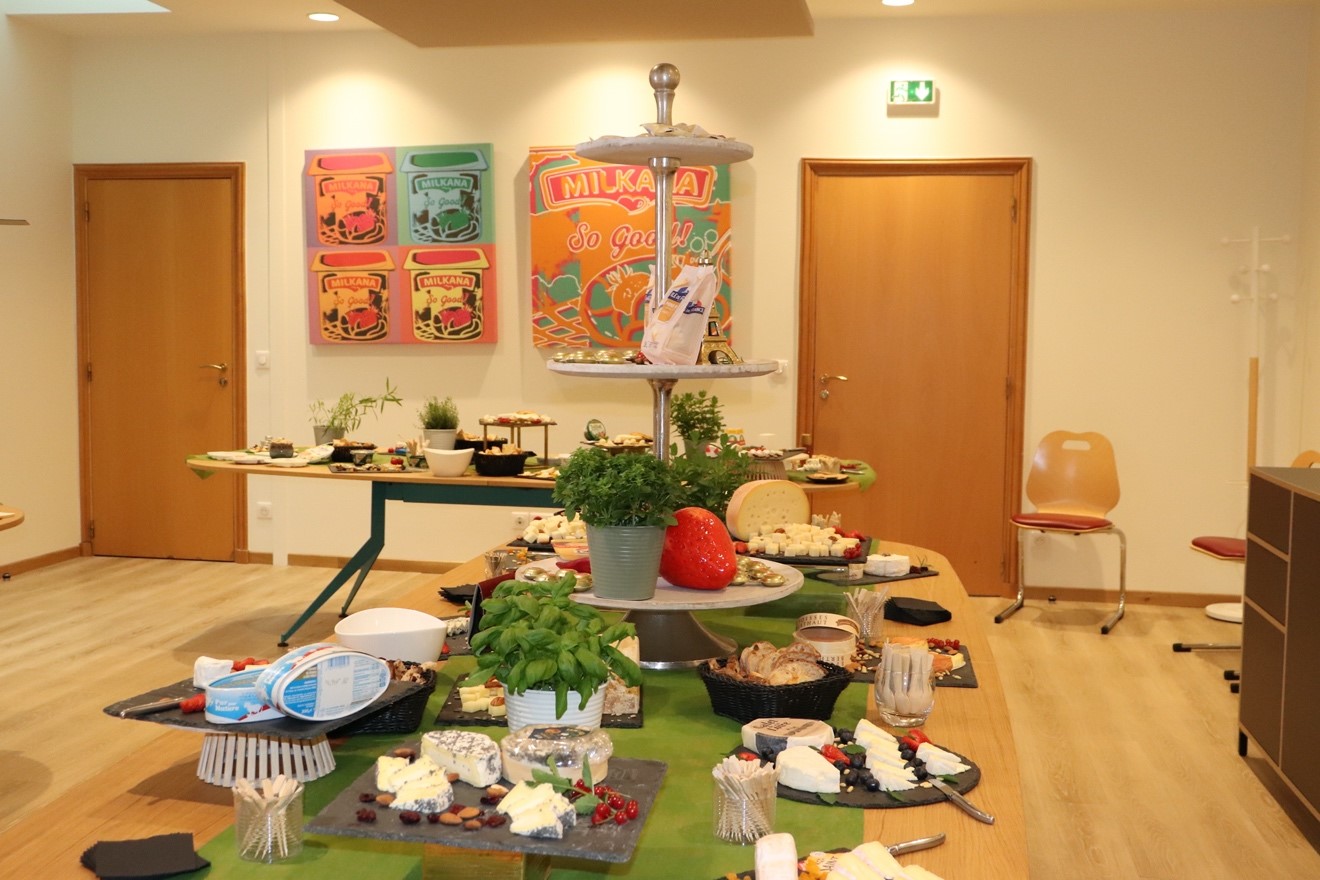
Cheese products displayed by Savencia Cheese Group. (Qian Haifen/People's Daily)
"A dessert without cheese is like a beautiful woman who is missing an eye," wrote French gastronomy expert Jean Anthelme Brillat-Savarin, describing the importance of cheese in French culinary culture in his work, "The Philosophy of Taste."
Chinese expatriate Qian Haifen, president of the French Overseas Chinese Newspaper, has lived in France for over 20 years, has gradually become accustomed to eating cheese.
"In France, I feel like I'm in a sea of cheese, with a rich variety of flavors, unique aromas, and different textures, making every taste of cheese a 'journey of taste buds,'" Qian said.
Similar to the Chinese fascination with tea culture, the French have strict requirements for cheese production techniques. French cheese culture embodies the profound emotions of the French towards cheese. For the French, cheese is not only nutritious and delicious but also a cultural carrier rich in the "nutrients" of French civilization.
From entering the Chinese market in 1997 to establishing cheese production factories and developing cheese products tailored to Chinese tastes, Savencia Cheese Group has deeply rooted itself in the Chinese market for nearly 30 years.
Starting with the launch of the cheese lollipop category, the company has continuously expanded its business in China, promoting French cheese culture.
"Savencia Cheese Group has witnessed the surge of Sino-French economic and trade relations," Van Elslande said. "What makes us even happier is that the cheese products crossing the seas not only bring the unique gourmet culture of French cheese to Chinese consumers but also enhance mutual understanding and tolerance between the peoples of China and France."
Taking root: Deeper communication, closer cooperation
Bangsheng Tianjin Company's workshops in Tianjin, north China, adhere to strict operating standards, requiring workers to wear specialized work clothes before entering and maintaining meticulous control over air temperature, humidity, and other conditions.
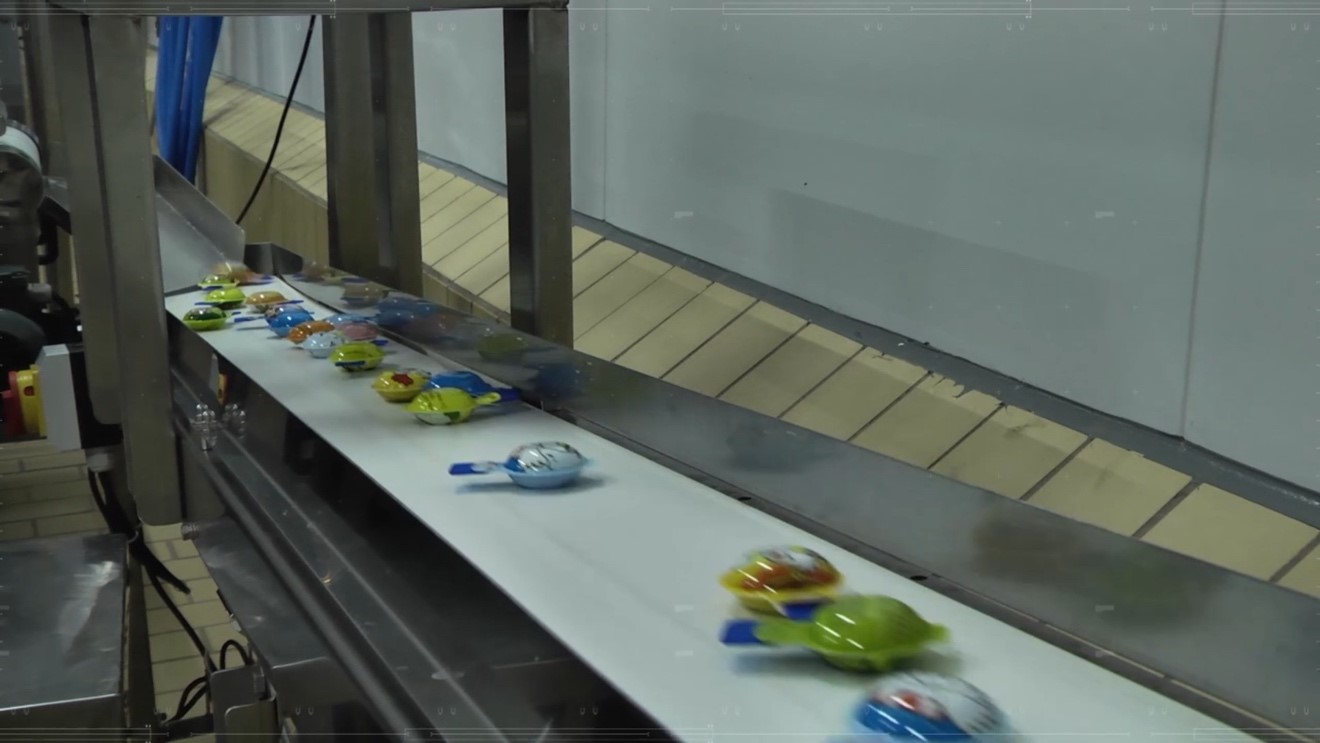
Cheese products manufactured in the workshop of Bangsheng. (Photo courtesy of the company)
Sun Li, who has been working at Bangsheng for 17 years, explained: "When constructing the third phase of the factory, each construction process was supported and supervised by French experts. For example, in terms of construction, the selection of clean wall panels, the choice of floor tiles, and even how to fill the tile joints were all meticulously managed. Although these issues may seem simple, if not handled properly, they can reduce the ground's corrosion resistance and lead to water accumulation and microbial growth."
"As the factory construction progressed, our communication with French personnel became increasingly in-depth," Sun said. When Bangsheng first started production, there were many specific exchanges between the Sino-French teams. As business rapidly expanded, the demands of the Chinese market for products became increasingly refined, leading to extended communication between the teams on hardware, processes, research and development, design, and other aspects.
Most of the time, cooperation begins from the start of a project. "This mode of cooperation has many benefits. Not only does it ensure the smooth completion of projects, but it also enhances the technical capabilities of Chinese personnel, enabling them to turn more ideas into reality."

Chinese and French cheese engineers discuss at Bangsheng. (Cui Xinyao/People's Daily)
The Tianjin Economic-Technological Development Area, where Bangsheng is located, was established in 1984 and was one of the first 14 national-level economic-technological development zones in China. It ensures the safety of imported cold chain food for businesses, coordinates electricity and green channel transportation, assists in attracting key supporting enterprises, and provides multiple approval convenience services.
Over the decades, Bangsheng and other enterprises have benefited from the reform dividends of this area, an experimental field for opening up to the outside world. Today, foreign-funded enterprises are a crucial part of the area's economy, accounting for approximately 45 percent of its GDP, 40 percent of its tax revenue, and three-quarters of its industrial output.
"Ensuring that enterprises can invest with confidence and develop with peace of mind is an important goal of our work," said Jin Xianghua, deputy director of the Management Committee of the Tianjin Economic-Technological Development Area. The committee has introduced policies to encourage investment in major projects, attract industrial investment, gather top talents from around the world, and promote innovation.
Jin explained: "We focus on two key points: first, using real money to support enterprise growth by focusing on the future layout of leading industries and addressing enterprise pain points; second, building an industrial ecosystem that integrates capital, talent, scenarios, and innovative models, comprehensively empowering enterprises, and creating a fair and just business environment."
How can more companies like Bangsheng be attracted to settle and establish roots in China? Jin outlined several key initiatives. The committee will continue to increase openness, intensify policy support, ensure the flow of innovative elements, consolidate the confidence of foreign investment in China, and effectively protect the investment interests of foreign-funded enterprises in the development zone.
Additionally, it will enhance its reputation for serving enterprises, provide full lifecycle services to domestic and foreign-funded businesses, address the pain points and bottlenecks that enterprises care about, and truly enhance their sense of gain.
In addition to these policies, how can enterprises from China and France cooperate better?
"Chinese and French enterprises need not only to cooperate but also to collaborate," said Pan Wenxian, general manager of Bangsheng. "In the future, cooperation should be more extensive, closer, and more harmonious."
Pan believes that after years of adjustment and two-way communication between Chinese and French teams, French colleagues have gradually come to understand the uniqueness of Chinese consumers and channels. They are willing to delve deeper into and listen to the needs of the Chinese market, allocate appropriate resources, and provide support while respecting regional differences in strategic direction.
"Meanwhile, local Chinese teams are focusing on cultivating homegrown talents and accelerating the learning and understanding of cheese categories and product technology from mature European markets," said Pan. "They aim to develop high-quality products that meet the needs of the Chinese market and work with domestic partners on various technical aspects to achieve the common progress of cheese enterprises and the industry."
Taste: Cheese reflects wisdom, deep ties between China and France
In the French Cheese Hut in Jing'an district, Shanghai, a cheese-tasting class was held in a relaxed and romantic atmosphere around a long table formed by four small wooden tables. Various cheese platters, wine glasses, colorful flowers, desserts, and snacks were arranged on the table. The class covered a range of topics, including the origin of cheese, different types of cheese, the steps of cheese making, and cheese pairing.
"France is renowned as the 'land of cheese.' Knowing how to properly eat French cheese is a form of art," explained class teacher Zhang Jia. She emphasized the importance of slicing cheese correctly, as different shapes require different cutting methods. "For round cheese, slice it like cutting a cake into triangular pieces from the center outwards. For square cheese, cut it diagonally, then slice each triangle in half."
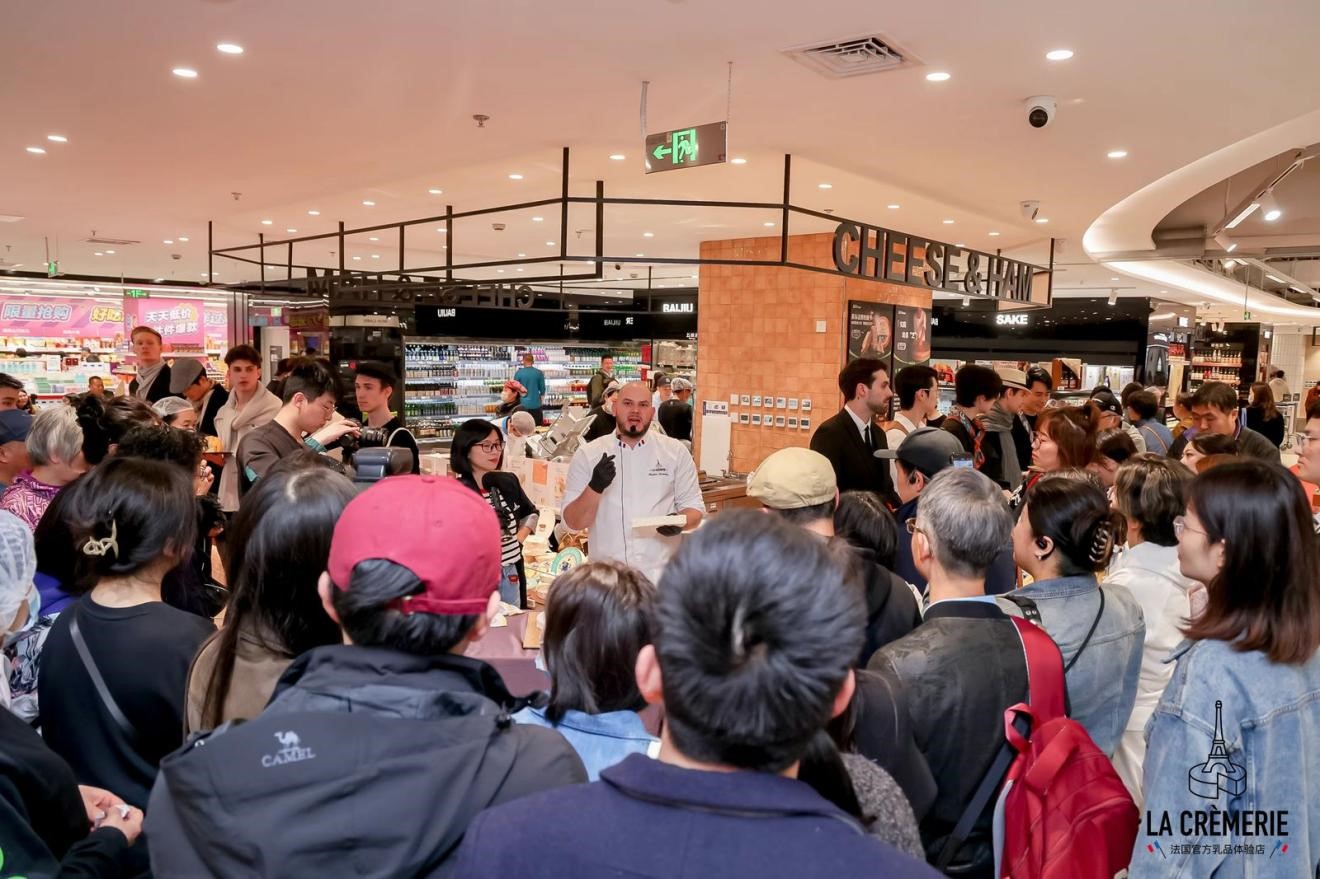
A French cheese master introduces cheese to consumers. (Photo courtesy of the interviewee)
Even the tools used are specific. "For sticky soft cheese, use a cheese knife with holes; for large and hard cheese, choose a double-handled cheese knife. There are also cheese bows, scrapers, and other tools," Zhang explained, demonstrating with the utensils.
This is the second time student Zhang Qin has attended the course. "I enjoy cooking. Every weekend, I make homemade bread, spread some cheese on it, and pair it with nuts and fruits. It looks very appetizing!" Zhang said. She finds the class meaningful, as it not only teaches her about French cheese and culture but also allows her to meet many like-minded individuals.
Since its inception in 2021, the cheese-tasting class has become the signature event of the French Cheese Hut. As the only officially certified dairy experience store of the French National Dairy Industry Association in China, the French Cheese Hut has become a window for consumers to experience the colorful culture of French cheese.
"All these cheeses are flown over from France, with over 30 varieties," said Liu Bingyi, the proprietor of the French Cheese Hut. Classic French cheeses like Brie, Comté, Roquefort, Bleu d'Auvergne, and Abondance are all available at the store. Liu explained that cheese also comes in different maturation periods, ranging from as short as four to six months to as long as 48 months.

A foreign model showcases cheese at a cheese show held in a Hema supermarket in Shanghai. (Photo courtesy of the interviewee)
In the exhibition area, various models of French cheeses, with surface textures resembling real cheese. Cheese pots, cheese gloves, wooden cheese boards, cheese knives, cheese boxes, and other items are exquisitely displayed.
Running this experiential store is not easy. Liu recalled that when it opened in 2019, they had to build the platform almost from scratch, with no previous experience to draw upon. "At first, we didn't even understand how to preserve cheese, so we specifically invited experts from France to train us."
Now, the store's influence has expanded: more and more consumers come to shop, from children to the elderly, from Chinese to foreigners, many of whom have become repeat customers. "When a regular customer comes, I know which cheese they want to buy and how much without even saying a word," said Liu.
Liu has a special affection for French cheese. In 2011, Liu, who was studying at Shanghai University, went to study abroad in Grenoble, France, through an engineering program. Once, she and her classmates visited a well-known local cheese shop, where people lined up to buy cheese, leaving a deep impression on her.
In 2013, Liu moved from the school dormitory to rent a room with a local family. The landlord was a French grandmother named Françoise. "Grandma Françoise always had a kind of cheese called brie at home. Every afternoon, she would pour a little red wine and cut a piece of cheese to share with me." Liu said, "From then on, I developed a habit of eating cheese."
More than 10 years have passed, and the friendship between Liu and Françoise has become even stronger. On holidays and birthdays, the two exchange blessings. "When she learned that I was running a French Cheese Hut and engaged in Sino-French cheese cultural exchanges, she was as happy as a child," Liu said. "She often tells me that there will always be a room for me in her house. A few days ago, the nearly 80-year-old grandma sent me a letter inviting me to visit her this summer. We will taste cheese together, just like we did over 10 years ago."
Blend: Sharing the 'taste of France and China' on the tip of the tongue
"Can anyone guess what I'm holding?"
French cheese master Bas recently kicked off a "cheese show" at a Hema supermarket in Shanghai's Changning district, captivating the audience with a mysterious object in his hands.
"Are you holding a ball? Or a pumpkin?" a curious child asked. The object, resembling a Chinese pumpkin from a distance, was revealed to be a French cheese called "Mimolette."
Bas, donning gloves and wielding a double-handled cheese knife, forcefully cut open the hard-skinned "ball," revealing an orange interior. He explained that the color comes from annatto, derived from the seeds of the annatto tree grown in tropical regions of South and Central America.
The French added annatto to milk to distinguish Mimolette from the similar Dutch cheese, "Gouda."
Using a cheese wire, Bas carefully sliced the Mimolette, offering portions for customers to taste.
"I just tasted several pieces. Such activities increase Chinese consumers' understanding of French cheese, which is a great exchange of Sino-French cuisine," said one customer.
This is not Bas's first time promoting cheese in China. "I have been working and living in Shanghai for nearly three years, mainly bridging the gap between cheese manufacturers and consumers, introducing the types, origins, and flavors of French cheese, as well as how to cut and pair them for better nutrition," Bas said.
Bas, from Reims, France, was previously a musician. His long-term performing career allowed him to taste a wide variety of cheeses from different regions of France. Later, out of personal passion, he chose to venture into the cheese industry.
Through cheese, Bas has met many Chinese friends and built deep friendships. This includes employees of French dairy companies, cheese makers, and ambassadors promoting cheese culture. "What surprised me was that whenever I performed cheese cutting, Chinese consumers were always very enthusiastic, and this enthusiasm deeply infected me."

Pan Wenxian, general manager of Bangsheng, interacts with consumers. (Photo courtesy of the interviewee)
Cheese holds an important position in French culinary culture, with the average person in France consuming 27 kilograms per year.
"More and more French cheeses are appearing on Chinese dinner tables, reflecting deep and pragmatic cooperation between China and France in fields such as economy, culture, tourism, and more," said Pan Wenxian, emphasizing the enormous potential of the Chinese dairy product market. Pan believes continuous innovation will produce more delicious and nutritious cheese products, thereby boosting Sino-French exchanges and cooperation in various fields.
As a relatively new dairy product, cheese consumption in China averages around 180 grams per capita annually.
"As more cheese appears on Chinese dinner tables, it reflects the deepening cooperation between China and France in the economy, culture, science and technology, and tourism. This trend also benefits from the improvement of Chinese people's income and openness, as well as their pursuit of a healthy and nutritious lifestyle," Pan said.
The potential of the Chinese dairy product market is huge. As a newcomer, cheese will continue to innovate in localization, from formula content and taste to packaging, bringing more diverse choices suitable for Chinese people's dinner tables and leisure time. This innovation will further enhance exchanges and cooperation between China and France in terms of high-quality food, well-being, and food technology.
Northeastern cuisine, salted duck, mapo tofu, braised pig's trotters... When talking about his favorite Chinese dishes, Bas listed a long string of favorites. "French and Chinese cultures have many similarities, and food is an important aspect," Bas said. He noted that on important holidays and occasions, both countries pay great attention to what they eat. French cheese is similar to Chinese tofu, and he hopes that by promoting cheese culture, people from both countries can better understand each other's culinary cultures and share the "taste of France and China" on the tip of their tongues.
Photos
Related Stories
- Children's chorus from China's Hainan charms French audience
- China, France renew 'kindred spirit' friendship, open new chapter of cooperation
- Children's chorus from Hainan brings China, France closer with beautiful singing
- China-France co-produced dance drama "Journey to the West" starts tour in both countries
- China's Ningbo develops thriving trade relations with France
- Agreement boosts joint work on parks
- Vloggers share unique 'gourmet' lens for China-France exchanges
- China, France to advance bilateral trade, economic cooperation: spokesperson
Copyright © 2024 People's Daily Online. All Rights Reserved.







